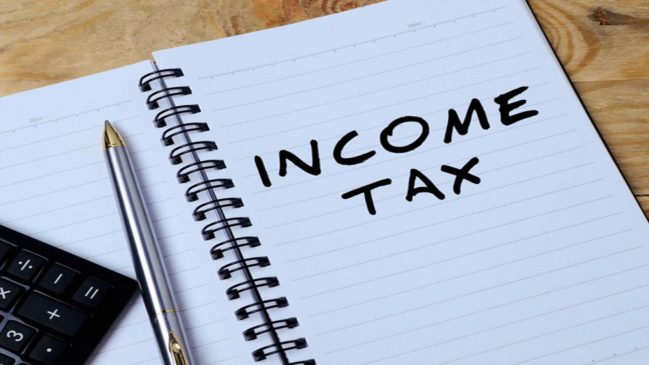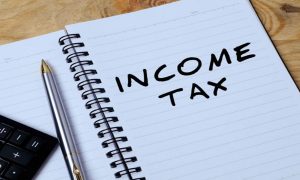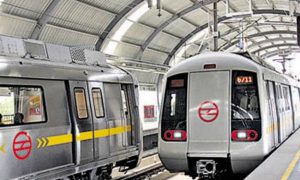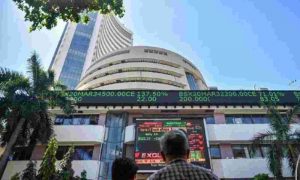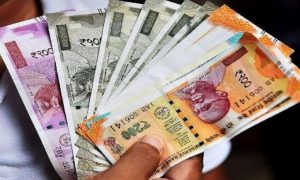Do you know first income tax was on incomes up to Rs 10,000? check history of Income Tax slabs since independence.
As Finance Minister Nirmala Sitharaman is going to present Budget 2024 for FY25, all eyes are on the announcement related to income tax slab for salaried emoployees. Currently there is no income tax till an annual income of Rs 2.50 lakh. But when India got independence there was a tax on a very small amount of annual income in today’s terms. The current generation will be surprised to see the tax slab of India during the time of independence.
There are two tax slabs in India under the old regime & new regime. In the Old Tax regime, on an income of Rs 2,50,000 to Rs 500,000, there was a five per cent tax on income above Rs 250,000. On income from Rs 5,00,001 to Rs 10,00,000, the tax rate is Rs 12,500 plus 20 percent above Rs 5,00,000. On income above Rs 10,00,000, the income tax rate is Rs 1,12,500 plus 30 percent above Rs 10,00,000.
In the new income tax regime, there is no income tax on up to Rs 3,00,000 in annual income. From Rs 3,00,000 to Rs 6,00,000, the tax rate is five per cent above Rs 300,000. From Rs 600,000 to Rs 900,000, the tax rate is Rs 15,000 plus 10 per cent above Rs 600,000. From Rs 900,000 to Rs 12,00,000, income is taxed at Rs 45,000 plus 15 per cent above Rs 9,00,000. From Rs 12,00,000 to Rs 15,00,000, the tax rate is Rs 90,000 plus 20 percent above Rs 12,00,000. On income above Rs 15,00,000, the tax rate is Rs 1,50,000 plus 30 percent above Rs 15,00,000.
Read More: ITR Filing 2024: Which Income Tax Regime Is Better For NRIs? Check Expert Inputs Here
Income Tax Slabs History Since India’s Independence
Tax Slab In 2020
Current new tax regime was introduced in 2020 wherein Taxpayers can choose between the old and new tax regimes. The tax regime was made a default setting for new taxpayers in 2023.
Tax Slab In 2019
Threshold limit was changed by Piyush Goyal in 2018-19 & increased the threshold limit of income tax to Rs 5 lakh from the earlier limit of Rs 2.50 lakh.
Read More: Union Budget 2024: 6 new changes to income tax that the new budget may bring
Income Tax Slab In 2017-18
The then FM Arun Jaitley revised the income tax slab. The income between Rs 2.50 lakh and Rs 5 lakh was brought under 5 per cent income tax bracket from earlier 10 per cent. The rebate under Section 87A of the Income-tax Act, 1961 (which had been given to people earning up to Rs 5 lakh) was reduced to Rs 2,500 from Rs 5,000 for people earning between Rs 2.50 lakh and Rs 3.50 lakh.
Income Tax Slab In 2014-15
Jaitley replaced the wealth tax with a surcharge of 2 per cent on the super-rich taxpayers with a taxable income above Rs 1 crore.
Income Tax Slab In 2012-13
Income up to Rs 2 lakh annually were not supposed to pay tax. There was a 10 per cent tax levied for earners in the range of Rs 2 lakh and Rs 5 lakh. For an income range between Rs 5 lakh and Rs 10 lakh a tax slab was of 20 per cent and those earning above Rs 10 lakh it was 30 per cent.
Read More: How to download acknowledgement number after filing ITR
Income Tax Slab In 2010-11
There was no tax up to Rs 1.60 lakh; taxpayers earning between Rs 1.60 lakh and Rs 5 lakh had to pay 10 per cent tax. Income up to Rs 5 lakh to Rs 8 lakh, the tax was 20 per cent. For income above Rs 8 lakh, the tax was 30 per cent.
Income Tax Slab In 1997-98
P Chidambaram presented a ‘Dream Budget’. The first tax slab of 10 per cent was for the Rs 40,000-Rs 60,000 income group; 20 per cent tax was for the Rs 60,000-Rs 1.50 lakh income group; and 30 per cent for income above Rs 1.50 lakh.
Also Read– How to Apply for Education Loans in India: A Step-by-Step Guide
Income Tax Slab In 1992-93
Manmohan Singh cut down the number of tax slabs to the lowest-ever at three. For income from Rs 30,000 to Rs 50,000, the slab was 20 per cent, for Rs 50,000 and Rs 1 lakh, the tax rate was 30 per cent, and 40 per cent was for those earning above Rs 1 lakh.
Income Tax Slabs In 1985-86
VP Singh, decreased the number of income tax slabs from eight to four. Taxpayers earning less than Rs 18,000 did not have to pay tax. On Rs 18,001 to Rs 25,000, a 25 per cent income tax was fixed; for the Rs 25,001 to Rs 50,000 income group, tax was fixed at 30 per cent. On Rs 50,001 to Rs 1 lakh income, it was 40 per cent, while for income above Rs 1 lakh, it was 50 per cent, which earlier used to be 61.87 per cent.
Aso Read– SBI launches Amrit Vrishti scheme; earn 7.25% interest on 444-day deposits
Income Tax Slab In 1974-75 Budget
Former FM YB Chavan cut the maximum marginal rate from 97.75 per cent (the highest-ever) to 75 per cent. While there was no income tax for taxpayers earning up to Rs 6,000, a 70 per cent marginal rate of basic income tax was introduced on the income slab over Rs 70,000 a year. The highest tax slab was 77 per cent.
Income Tax Slab In 1949
The first income tax Income tax slab revision was done by John Mathai in 1949-50, which reduced tax on incomes up to Rs 10,000 by a quarter of an anna in two slabs. In the first slab, he reduced it from one anna to nine pies, and in the second tax slab, he reduced it from two annas to one nine pies.
For more news like this visit Officenewz.com

